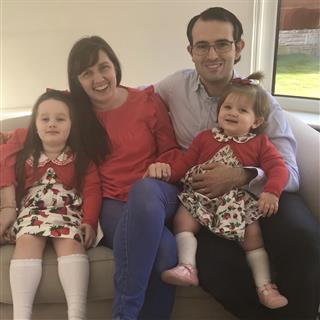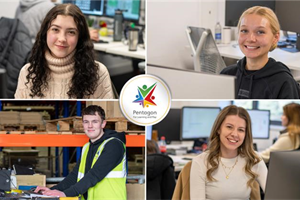
Company News
Prepare your children to start school for the very first time!
Starting school is a big milestone in a child’s life. Our little learners begin to take on new challenges, develop relationships and gain independence. Emotions are often a mix of excitement, anxiousness, happiness and worry for both child and parent alike!
As parents and practitioners, we want to encourage and prepare our children for a smooth and settled transition into school life.
Children are not expected to start school being able to read and write but the following ideas in this blog will suggest ways in which children and caregivers can learn through play and have fun together before school life begins and beyond.
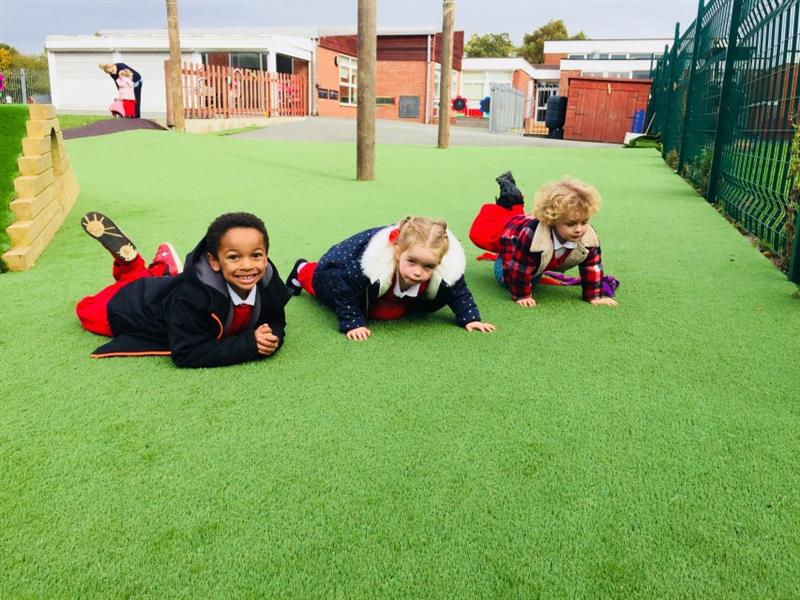
Fine Motor Activities
Practising fine motor skills helps children to develop the small muscles in their hands in conjunction with their brains and eyes. Developing fine motor skills supports children when eating, getting dressed and learning to write.
Both of my children enjoy playing with playdough which has really helped to build hand strength, leading to accurate pencil control.
As children poke, squash, roll and stretch playdough they are developing hand-eye coordination and sustaining concentration. Playdough is also a fantastic base material for creative play. Children will enjoy using their own toys such as dinosaurs alongside natural materials – leaves, sticks, pine cones and rocks to create their own dinosaur small world. Dinosaurs could be hidden inside playdough which is a great challenge for small hands and fingers when retrieving them!
Playdough is a fantastic resource to use when introducing children to using scissors as it can be held when rolled into a snake shape and cuts easily. I have also made a ‘playdough meal’ with my daughter which she used to practise cutting with a plastic knife and fork. This is a fun way of learning how to use cutlery correctly in preparation for school mealtimes.
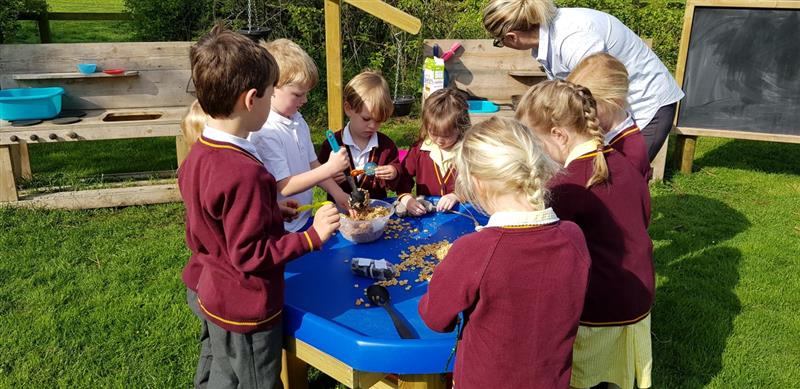
Filling, scooping and pouring fascinates both of my daughters and really holds their attention. Many different materials such as water, rice, cereal, birdseed, sand, mud, buttons, pompoms or oats can be used. Your chosen material can be placed in a large storage tub with spoons, scoops, different pots and containers, funnels or sieves. This sensory learning activity helps to develop fine motor skills, gives an understanding of cause and effect and develops early mathematical language such as full, half full and empty.
Threading is a valuable activity when developing control in fine motor skills which will allow children to be able to fasten buttons, to draw and to open lunchboxes and packets. Threading helps to develop a pincer grip – where children use their thumb and index finger to pick up and manipulate small objects which is the correct grip needed when holding a pencil.
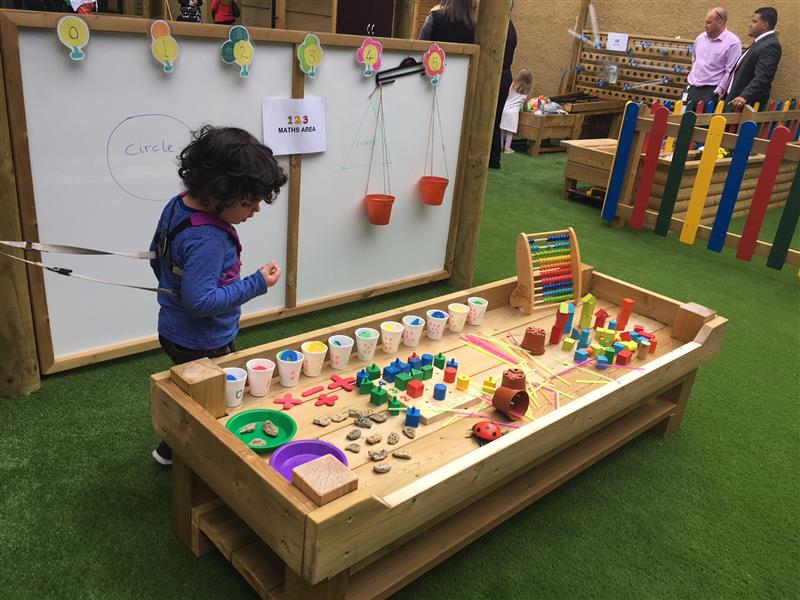
Threading allows children to develop patience and perseverance and can help with early maths skills when making colourful patterns and counting beads.
Lengths of dried spaghetti can be placed into a ball of playdough which acts as a stable base for little learners to thread pasta shapes onto. Leaves can be threaded using a plastic needle or beads and buttons can be threaded onto pipe cleaners to make bracelets.
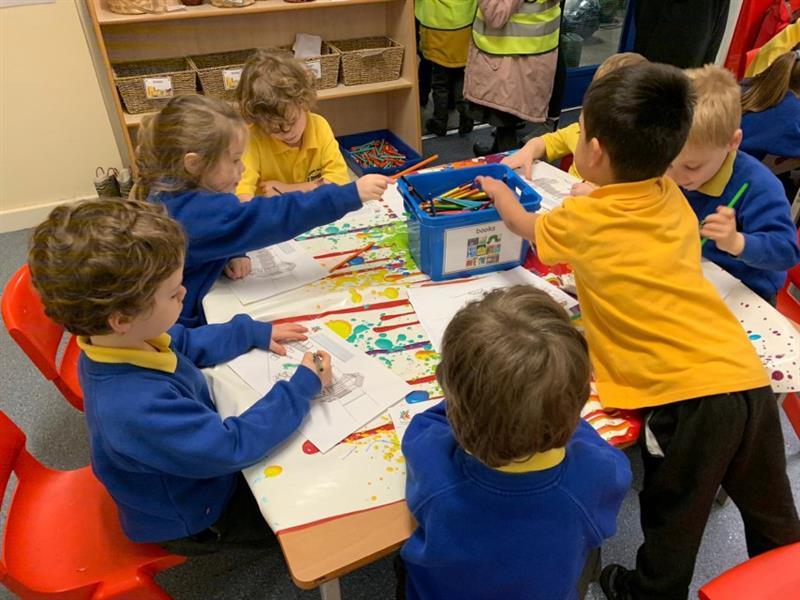
Gross Motor Skills
Gross motor skills involve the control of large body movements, core stability and posture. Gross and fine motor skills work together as core muscles help to maintain stability whilst sitting in a chair and performing small motor movements with the hands such as using pencils and scissors.
Hopscotch is an enjoyable game which develops gross motor skills, balance and strength. During hopscotch children practise hand-eye coordination when throwing an object to land in a square. Children also learn to coordinate the two sides of their body when hopping from one leg to two.
Obstacle courses can be relatively simple to set up in the garden where children can be encouraged to jump, run, crawl, balance, lift and throw. Children can practise running between two objects, kicking at a target or goal, crawling under a piece of material supported by chairs or throwing bean bags into a basket.

Allowing children to make marks on a vertical surface such as a chalkboard or a large sheet/piece of paper or cardboard attached to a wall is a beneficial gross motor exercise. Children are able to make bigger movements which encourages strength and flexibility in the shoulder and chest muscles. When children are writing or drawing across a large vertical surface, they cross the midline of their body with their dominant hand to reach all of the spaces.
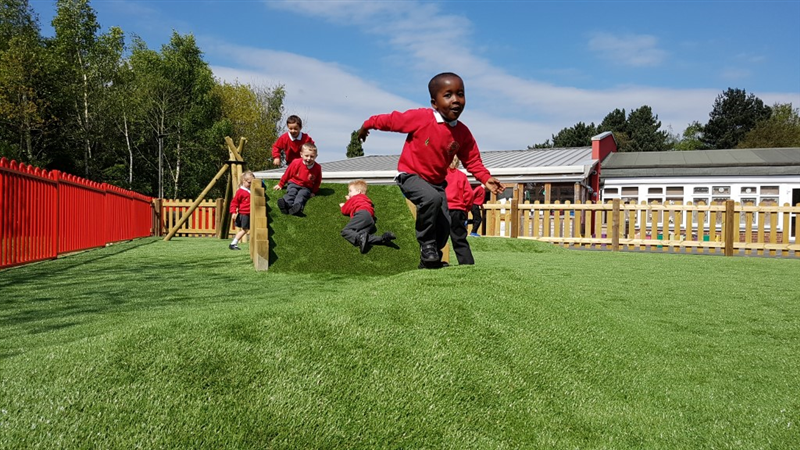
Early Phonics
Children certainly don’t need to start school knowing all of their letter sounds as teachers will spend time introducing letters and sounds during the first year of schooling. Some children may start to show an interest in letters from a young age which can be encouraged and explored at home.
I find that it is best to introduce both capital letters and lower-case letters with young children at the same time, introducing the idea of capital letters for special names and beginnings of sentences. I also introduce the letter name and the letter sound at the same time. For example, if I am introducing the letter A, I will show children A and a, introduce the letter name (as it is said in the alphabet) and the phonetic letter sound. I would then encourage children to draw the letter in the air and find objects that begin with that letter.
Usually when children begin school, they will spend time working on Phase 1 Phonics. Activities in phase 1 place emphasis on speaking and listening skills. Drawing children’s attention to rhythm and rhyme helps learners to recognise speech patterns. Sharing books and rhymes together will help children to recognise rhyming words and letter strings. Children will begin to devise their own rhymes and will enjoy playing games where they have to find pairs of objects that rhyme. It can be useful to encourage children to clap, stomp or play an instrument when looking at the number of syllables a word contains. Identifying syllables introduces children to the idea that words contain phonemes and will help when reading and spelling.
During the first stages of learning to read, children will learn to recognise letter sounds and blend them together. A fun game to practise oral blending at home involves collecting a selection of objects and asking if your child can pass you a c/u/p or a p/i/g. Learners will listen to each individual sound as it is spoken and learn how to blend them together to retrieve the correct object. You could even introduce this game into everyday routines by asking your child to find their c/oa/t.
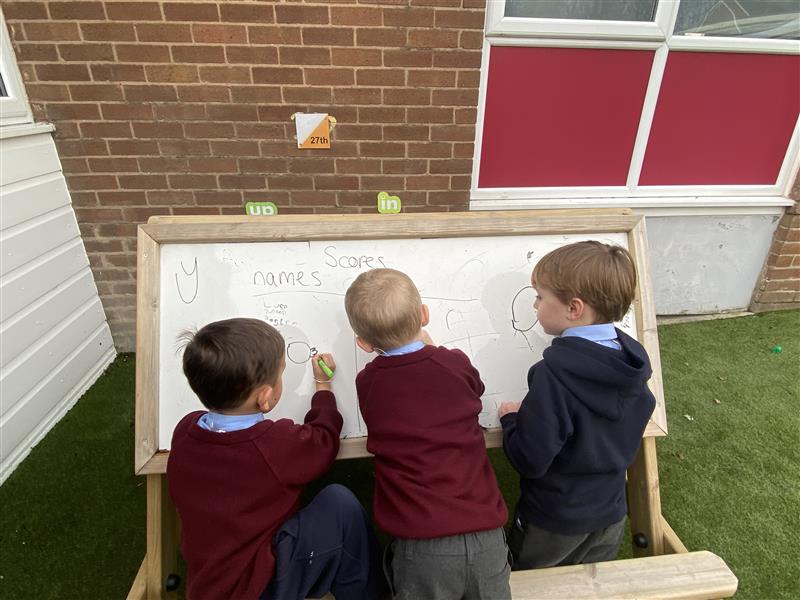
Mark Making
Mark making involves children using tools or their bodies to intentionally create shapes, patterns and lines. Children enjoy making marks using a variety of different materials. Salt is a great material for mark making as marks are not permanent and pupils may be more inclined to ‘have a go.’ Salt can be easily coloured using food colouring and then placed in a shallow, flat tray with a piece of coloured paper/card underneath. Pupils will enjoy using a pencil or a paintbrush to make marks in the salt. This technique is great when practising letter formation as there is no pressure on children to ‘get it right first time’ they just shake the salt tray and keep practising!
A container of water and a paintbrush can provide children with hours of fun as they experiment with making marks on different surfaces outside. Marks can be made using chalk outside on the floor or fence panels and children can trace the marks with water to make them disappear.
For those children who enjoy playing with toy vehicles, felt pens can be attached to the back of cars with tape, standing in an upright position. Toy cars can then travel across a large piece of paper on the floor, making marks as they go! Children could be encouraged to make vertical, horizontal and zig zag lines.
.png)
Dot painting with a cotton bud introduces young children to correct grip as tiny hands learn to hold the cotton bud when dipping it into paint. Hand control is developed when tracing over pre-drawn lines or creating dotty pictures of their own!
It is often difficult for preschool children to learn to pick up a pencil and place it into the correct hand position. A solution to this is to place their pencil on a table with the nib facing them. Using their dominant hand, the child then pinches the pencil roughly a quarter of the way up using their thumb and index finger, picks the pencil up and flicks it over until the pencil rests in the correct hand position for writing. This can be remembered by stating ‘place it, pinch it, pick it, flick it’ which really helps whilst children are initially learning correct pencil grip which is an essential skill for future writing.
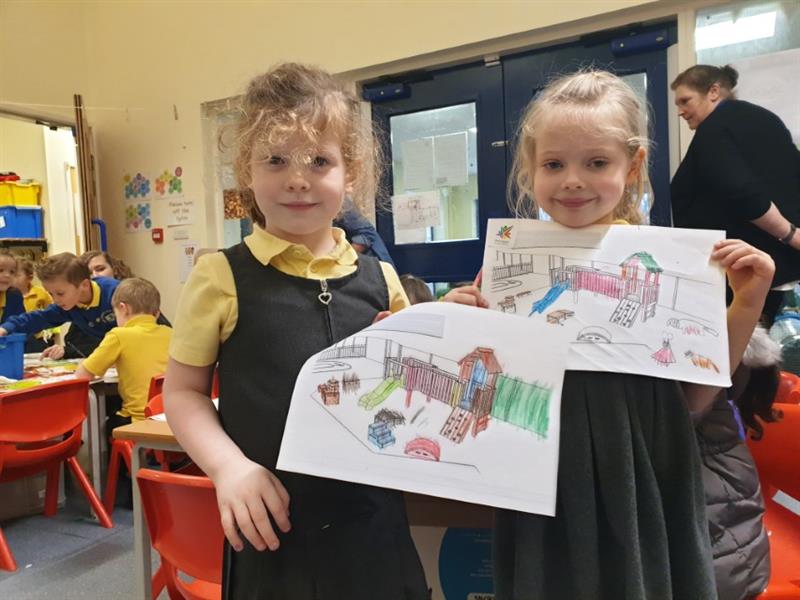
Name Recognition
Although children don’t need to be able to write their name before starting school it is hugely beneficial if they can recognise their own name. Some schools have self- registration systems where children place their name into a basket and pupils will need to recognise their own name on their peg, book bag or tray.
I would initially introduce a child to their first name and once they can recognise it I would also introduce their surname. I would always present a child’s name with a capital letter for both first and surname followed by lower case letters and discuss this correct representation with the child.
Learners will enjoy recognising the letters in their name and placing them into the correct order which can be done using different games. Sticky labels can be added to toy cars or blocks and ordered to spell a child’s name. Magnetic letters, wrapped in tin foil is a great work out for hand muscles, children retrieve the letters and then carefully order them. Names can be written onto card and children can arrange buttons or place dot stickers over the letters which helps with fine motor skills and visual tracking.
Number Skills
Numbers are usually first introduced to children through singing well known songs and nursery rhymes such as ‘Five Little Speckled Frogs’ or ‘Ten Fat Sausages.’ These types of songs encourage children to count on their fingers which can be a useful early maths strategy. It can be beneficial for children to recognise some numerals before they start school, initially 1-5 and then 1-10.
Numbers appear all around us and children will enjoy going on number hunts and taking photographs, spotting numerals on doors and car number plates. Cooking and following a recipe involves children in useful number work as they learn to stir a mixture five times or place two spoonfuls into a bowl.
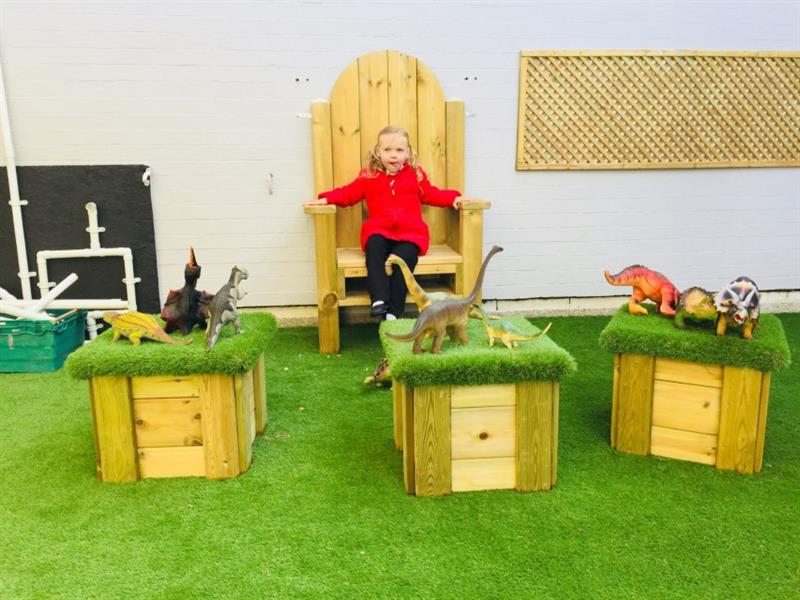
Early counting practise aims for children to master one to one correspondence. Children will learn to match objects to their corresponding number and understand that numbers represent a quantity. It is important for children to realise that numbers have meaning and relate directly to a quantity rather than just being able to count by rote. Activities to promote one to one correspondence could involve children counting as they drop coins into a tin, the noise of the coin dropping aids this skill. Egg boxes with numbers written on them allow children to count out the correct number of items into each section.
Subitising is an important early maths skill where pupils instantly recognise the number of objects in a small group without needing to count them. Playing dice games or playing dominoes really helps to develop number sense as children will begin to recognise three dots as equalling three automatically and they will apply this knowledge to identify double three as six at speed.
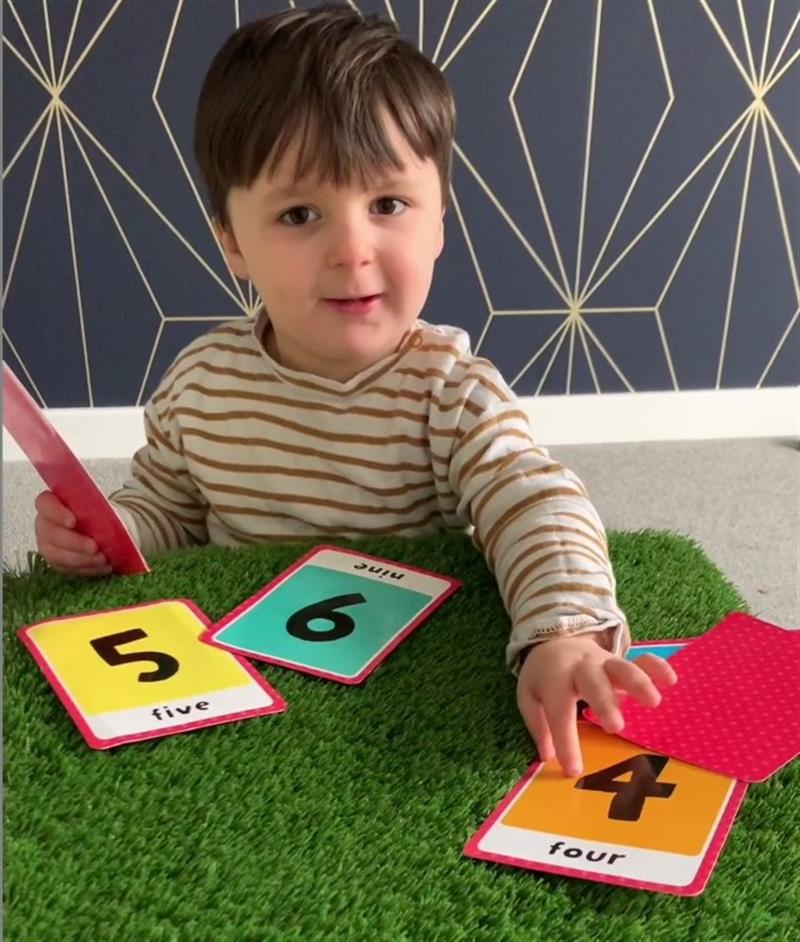
Practical Skills
As a parent, we tend to worry about the day-to-day practical tasks our children may face as they begin school. Will somebody help them to put their coat on? Will lunchtime staff assist them with opening their lunch? The answer to those questions is absolutely ‘Yes’ but the following tips may be useful to practise before school begins.
I taught my little girl to put her coat on like a ‘Superhero’ which involved placing her hood over her head and then reaching to put each arm in. To help children to recognise which shoe or pump goes on which foot (especially when they are in a rush) it can be useful to cut a large sticker in half and place it inside each shoe facing the child so that when they look at their shoes the sticker joins up to make a picture.
Taking a trip to your child’s school beforehand and allowing them to have a peep in, even at the playground or the school field may help to familiarise them. School websites provide plenty of important information and it may be nice to discuss key information about their class and show your child photographs of past school events.
Before your child begins school, you can talk to them about all the wonderful things that they know and can share with others. You can possibly role play different scenarios showing your child what to do if they were unsure, upset or lonely, encouraging them to communicate clearly and independently.
Speaking from experience asking your child, “How was your day?” will usually lead to the one-word answer ‘Good.’ I found asking a specific question such as: What was the best thing about your day? Tell me something funny that happened today or Tell me something you learnt today usually gives a more detailed answer. Also, children often don’t want to talk about their day straight away so waiting until tea time (just before bed in my case!) sometimes means that children are ready to open up.
As a parent with a daughter who has almost completed her first year in school, I urge you to enjoy it all, the ups, the downs, the rushed mornings and the sleepy bedtime cuddles. The first year really does happen in a flash and you will soon forget your worries and become amazed at the progress your child makes.



